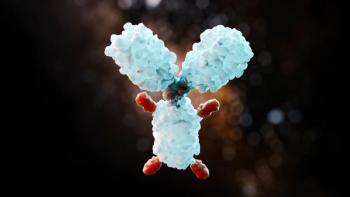
ADA 2025: Combination of Bimagrumab and Semaglutide Shows Enhanced Fat Loss and Muscle Preservation
Key Takeaways
- Bimagrumab combined with semaglutide enhances fat loss and muscle retention more effectively than either treatment alone, as shown in the BELIEVE trial.
- The combination therapy resulted in significant reductions in weight, visceral fat, and inflammation, with 92.8% of weight loss attributed to fat mass.
New research reveals that combining bimagrumab and semaglutide enhances fat loss while preserving muscle mass, revolutionizing obesity treatment strategies.
In the randomized, double-blind, placebo-controlled, multicenter BELIEVE phase 2b trial, bimagrumab (Eli Lilly and Company)—a drug indicated to combat muscle loss—combined with semaglutide (Ozempic, Wegovy; Novo Nordisk) led to greater fat loss and improved muscle retention than either treatment alone. The findings were shared in a panel discussion titled “Can We Improve the Quality of Weight Loss by Augmenting Fat Loss While Preserving Lean Mass? The BELIEVE Study of Bimagrumab + Semaglutide,” presented at the 85th Scientific Sessions of the American Diabetes Association (ADA) in Chicago, Illinois, held from June 20 to June 23.1,2
The experts also revealed that new data on a novel continuous protein sensor is forthcoming, showing promise for real-time tracking of muscle breakdown and protein intake. This innovation aims to help individuals on GLP-1 therapies prevent muscle loss.1
“As we enter a new era of obesity treatments, it’s vital to focus not just on the amount of weight lost but on preserving muscle mass and gaining the health benefits that result from treating obesity,” Samar Hafida, MD, vice president of Obesity Association, a division of the ADA, said in a news release. “We are championing research to ensure people living with obesity have access to effective treatments to reduce adiposity while maintaining muscle mass, which is critical to their well-being and supports durable, long-term outcomes.”2
The panel featured Ronenn Roubenoff, MD, MHS, Roubenoff Consulting, LLC; Penelope Montgomery, MD, Optimal Clinical Trials; Steven B. Heymsfield, MD, Pennington Biomedical Research Center; Louis J. Aronne, MD, FACP, DABOM, Weill Cornell Medicine; and Ania M. Jastreboff, MD, PhD, Section of Endocrinology. Together, they discussed how these breakthroughs aim to improve the quality of weight loss by preserving crucial lean mass for long-term health.1
Combination Therapy With Bimagrumab and Semaglutide
Roubenoff began the discussion by outlining the mechanism of bimagrumab, a first-in-class monoclonal antibody that targets activin type 2 receptors to promote muscle preservation and growth.1
“Activin signaling in muscle inhibits muscle growth. Bimagrumab blocks these pathways and leads to the opposite effect—increased muscle mass and decreased fat mass. This happens without affecting dietary intake,” he said.1
In the BELIEVE clinical trial, researchers evaluated the effects of bimagrumab alone and in combination with semaglutide in adults with overweight or obesity. A total of 507 individuals were randomly assigned to receive semaglutide as a once-weekly subcutaneous injection and/or bimagrumab via intravenous (IV) infusion at weeks 4, 16, 28, and 40.1,2
Montgomery reported the primary end point of the trial as the change in body weight from baseline, with secondary end points including changes in waist circumference, total body fat mass, visceral adipose tissue, and lean mass.1,2
The results demonstrated that the combination therapy led to greater reductions in weight, total and visceral fat, and markers of inflammation compared with either treatment alone. Notably, 92.8% of the total weight loss from the combination therapy came from fat mass, compared to 71.8% with semaglutide alone. When bimagrumab was used as a monotherapy, 100% of weight loss was attributed to fat mass, and there was a 2.5% increase in total lean mass.1
“You can see the very striking difference in the proportion of weight loss. It’s really a very impressive reflection of the composition of weight loss induced by the combination of these two drugs,” Heymsfield added.1
Aronne shared further data on reductions in visceral fat, inflammation, and metabolic endpoints, including significant improvements in waist circumference with the combination therapy.1
“The high-dose combination produced a 21 cm reduction in waist circumference. To my knowledge, this is the best result we’ve seen. To put it in perspective, that’s equivalent to 8½ holes on your belt. If you try to add that many holes, you’ll realize you’ll need a new belt. So, for all the VCs in the audience, maybe consider investing in belt manufacturing—many people may need new belts if this comes to fruition,” Aronne said.1
Continuous Protein Sensor for Sarcopenia Management
New study data, shared in a press release, demonstrate proof of concept for a continuous protein sensor designed to prevent muscle loss during GLP-1 therapy. This biosensor utilizes a DNA-based bioreceptor to detect phenylalanine, an amino acid released during muscle breakdown or after protein consumption. In lab testing, the sensor successfully detected phenylalanine with a low detection limit and demonstrated stability, linear performance, and minimal sensitivity loss over seven days.1
“While patients are advised to consume more protein to preserve muscle, it’s often difficult to know if they’re getting enough. That’s why solutions that provide real-time feedback are more important than ever—especially for those on GLP-1 therapies, older adults, or anyone managing sarcopenia,” said Rebecca Gottlieb, PhD, vice president of Advanced Sensor Technologies at Biolinq and lead author of the study.2
The goal of this technology is to provide real-time feedback to patients, helping them monitor whether they are consuming enough protein to preserve muscle mass. Clinical trials are planned to evaluate the sensor’s performance in real-world settings.2
Conclusion
The breakthroughs presented in the BELIEVE clinical trial highlight a new path forward in obesity treatment by focusing on the quality—not just quantity—of weight loss. Preserving lean mass is critical for metabolic health, mobility, and long-term outcomes.1
“This study represents another major step forward in the evolution of obesity treatment, building on the significant weight loss benefits of semaglutide and combining it with bimagrumab to improve patient outcomes,” Heymsfield concluded. “These insights indicate that it is not only possible to achieve substantial fat loss but also to preserve—or even enhance—lean mass in the process.”1
REFERENCES
1. Roubenoff R., Heymsfield S., Aronne J., Jastreboff A. “Can We Improve the Quality of Weight Loss by Augmenting Fat Loss While Preserving Lean Mass? The BELIEVE Study of Bimagrumab + Semaglutide.” Presented: 85th Scientific Sessions of the American Diabetes Association; June 23, 2025; Chicago, Illinois.
2. New GLP-1 Therapies Enhance Quality of Weight Loss by Improving Muscle Preservation. American Diabetes Association. News release. June 23, 2025. Accessed June 23, 2025. chrome-extension://efaidnbmnnnibpcajpcglclefindmkaj/https://professional.diabetes.org/sites/dpro/files/2025-06/ADA2025_BUNDLEDMUSCLEMASS6.21.pdf
Newsletter
Stay informed on drug updates, treatment guidelines, and pharmacy practice trends—subscribe to Pharmacy Times for weekly clinical insights.
















































































































































































































